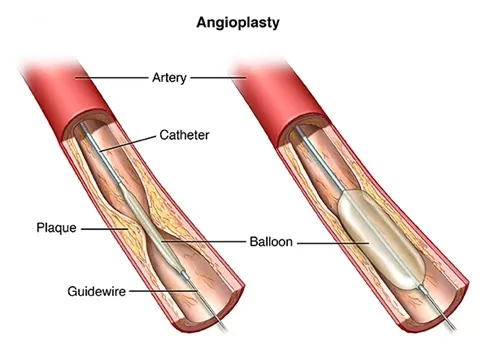What is angioplasty ?
Angioplasty & Stent Placement in Jaipur
Angioplasty is a medical procedure used to widen narrowed or obstructed arteries. It is commonly performed to treat coronary artery disease, which occurs when the blood vessels that supply blood to the heart become narrowed or blocked by a buildup of plaque. During angioplasty, a thin, flexible tube called a catheter with a balloon at its tip is inserted into the narrowed artery by Cardiologist In Jaipur.
Once in place, the balloon is inflated, pushing aside the plaque and expanding the artery, which improves blood flow to the heart. In some cases, a stent, a small mesh tube, may be inserted into the artery to help keep it open after the balloon is deflated and removed. Angioplasty is often performed as a minimally invasive alternative to open-heart surgery and can help relieve symptoms such as chest pain (angina) and reduce the risk of heart attack.



